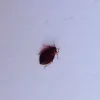@
falcon269 I’m currently a lead Biologist (researcher), whose primary function is in Genome Editing. Insecticides is not my focus, but am privy to current preliminary studies in some areas. Because of my position, I am unable to provide any links to current research; I would loose my job in a New York minute! In fact, I regret even making a comment in this regard within this thread.
Regardless, what I can say is the following; as you are probably aware, permethrin-impregnated bed nets for the prevention of malaria have been used for some time now in African nations, in the hope of reducing child mortality rates. The pre-treated nets use a dose of 0.5 g of permethrin/m2 per/of netting. Overall, this has been highly successful. Several early studies were done as a basis, with follow-up studies between 5 to 10-years. These studies showed acceptable tolerances for the continuance of the programs. In the mid 2000s some concerns were noted, but nothing outstanding. By 2010, 2012 the bulk of the initial group of children being studied, demonstrated a marked increase in developmental problems. It was determined on testing that bed nets showed persistence of permethrin residues, which were being handled by both child and adults. Soil and environmental factors were also tested.
Understanding the 1970s bulk studies on the nervous system of mice, demonstrated that permethrin affects the brain in the way that it was designed to behave. That is, it causes repetitive firing of the electronic signals in particular regions of the brain. These effects were found in laboratory animals used for predicting what might happen in humans. This was now being shown in the more recent studies in Africa.
As with the behavioral studies of rats and mice, which showed reductions in learned behavior, as well as impairments in balance, strength, and speed. With one study that found changes in motor activity and social behavior in the offspring of mice who were given permethrin prior to mating. This is important to understand, as permethrin was once considered safe for pregnant women and breastfeeding. However, this is now being contested, as new long-term findings demonstrate otherwise.
Furthermore, new preliminary studies have found a direct impact on the immune system, showing significant effects. Results indicated that permethrin led to the death and/or reduced production of blood cells necessary to fight bacteria and viruses and remove waste products from the blood. Varied physiological changes, including DNA damage, were reported in other systems.
One of the primary concerns, is recent research has demonstrated that permethrin exhibits the characteristics of an endocrine disruptor. Endocrine disruptors are chemicals that interfere with the communication system of glands, hormones, and cellular receptors that control the body’s internal functions. A relatively unique feature of endocrine disruptors is that they exert their effects at extremely low doses. Disorders that have increased in prevalence in recent years such as unusual male gonadal development, infertility, ADHD, autism, intellectual impairment, diabetes, thyroid disorders, and childhood and/or adult cancers are now being linked to prenatal exposure to endocrine disruptors.
Recent studies are also finding similar data in the US, Canada and throughout the EU. These studies are focused on children, as they are more susceptible. Urine samples have shown notable increases of pyrethroid insecticides, cis- and trans-permethrin. The primary route of the children's exposure to the combined isomers was through dietary ingestion, followed by indirect ingestion (air sampling from household sprays confirmed this, as well as dust samples within homes, as examples).
I will also add, that several studies have been shown the effects of combinations of chemicals used among U.S. military personnel during the Persian Gulf War (Gulf War Syndrome), which included permethrin-impregnated within soldier’s uniforms.
I don’t have a great deal of time to put forth to this discussion, but hope this provided some insight.


























